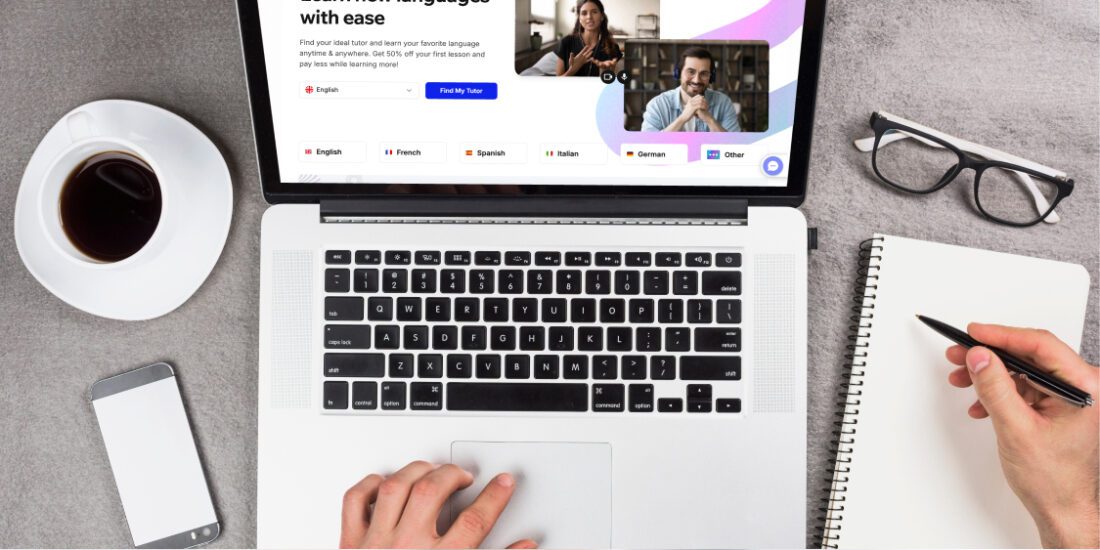
Effective language tutoring program for student success
According to a 2023 report by the International Language Learning Association, students who participated in structured tutoring programs showed a 40% improvement in language proficiency compared to those who relied solely on classroom instruction. Furthermore, 85% of students who received personalized tutoring reported feeling more confident in their language skills, leading to increased participation in class and improved overall academic performance.
By combining innovative teaching methods, cultural immersion, and technological resources, well-designed tutoring programs can significantly accelerate language acquisition and boost student confidence.
This article explores the key components of an effective language tutoring program and how they contribute to student success.
Personalized assessment and goal setting
The foundation of any successful language tutoring program lies in its ability to tailor instruction to each student’s unique needs and aspirations. This process begins with a comprehensive assessment of the student’s current language proficiency, learning style, and specific challenges. Skilled tutors use a combination of standardized tests, conversational evaluations, and written assessments to gauge the student’s strengths and weaknesses across all language domains: speaking, listening, reading, and writing.
Once the initial assessment is complete, tutors work closely with students to establish clear, achievable goals. These goals should be SMART: Specific, Measurable, Achievable, Relevant, and Time-bound. For instance, a student might aim to improve their IELTS speaking score from 6.5 to 7.5 within three months or to confidently deliver a 10-minute presentation in the target language by the end of the semester. By setting concrete objectives, students gain a sense of direction and motivation, while tutors can design targeted lesson plans and track progress effectively.
The personalized approach extends to the selection of learning materials and activities. Tutors curate resources that align with the student’s interests, academic or professional focus, and learning preferences. For example, a business student learning Spanish might work with articles from economic journals, while a music enthusiast studying Japanese could engage with song lyrics and interviews with musicians.
Interactive and immersive learning techniques
Effective language tutoring programs leverage a variety of interactive and immersive learning techniques to create an engaging and productive learning environment.
Role-playing exercises are a cornerstone of this approach. Tutors create scenarios that mimic real-life situations, allowing students to practice their language skills in context. For instance, a student might simulate ordering food at a restaurant, negotiating a business deal, or giving directions to a lost tourist. These exercises not only improve language fluency but also boost confidence in using the language in authentic situations.
Another key technique is the use of multimedia resources. Tutors incorporate a range of audio and visual materials, such as podcasts, news broadcasts, films, and music videos in the target language. These resources expose students to diverse accents, colloquialisms, and cultural nuances, enhancing their listening comprehension and cultural awareness.
Conversation practice is also crucial. Tutors engage students in meaningful discussions on various topics, encouraging them to express opinions, ask questions, and navigate complex ideas in the target language.
To further enhance immersion, many tutoring programs implement a target-language-only policy during sessions. This creates a mini-immersion environment, pushing students to rely on their language skills and promoting quicker thinking in the target language.
Here’s a list of key interactive and immersive techniques used in effective language tutoring:
- Role-playing exercises
- Multimedia integration
- Guided conversation practice
- Target-language-only sessions
- Cultural immersion activities
Consistent progress monitoring and feedback
Feedback plays a crucial role in this process, serving as a powerful motivator and guide for students. Effective tutors provide specific, timely, and actionable feedback that highlights both strengths and areas for improvement. They focus not only on correcting errors but also on reinforcing successful language use and effective learning strategies. This balanced approach to feedback helps build student confidence while providing clear direction for continued growth. Moreover, tutors encourage student self-reflection, guiding learners to assess their own progress and set new goals. This fosters a sense of ownership over the learning process and develops critical metacognitive skills that are essential for long-term language learning success.
Example language tutoring program
This 12-week program is designed to rapidly improve Spanish language skills for business contexts. Each week consists of three 90-minute sessions, progressively building language competence and cultural understanding.
Week 1 focuses on introductions and basic business vocabulary. The first session covers greetings, self-introductions, and company roles using role-play exercises. The second session introduces common business terms through authentic materials like company websites. The third session practices phone etiquette and making appointments, utilizing simulated phone conversations.
Week 2 delves into email communication. Session one teaches formal email structures and common phrases. Session two involves drafting and responding to various types of business emails. The final session of the week incorporates a mini-project where students create a professional email campaign in Spanish.
Week 3 emphasizes presentation skills. The initial session covers presentation structures and transitional phrases. In the second session, students learn to describe graphs and trends. The week concludes with students delivering short presentations about their companies or industries.
Subsequent weeks build on these foundational skills, introducing more complex business scenarios. Week 4 focuses on negotiation tactics, while Week 5 covers marketing terminology and concepts. Week 6 is dedicated to financial Spanish, including reading annual reports and discussing economic trends.
The program integrates various teaching methods throughout, including immersive role-play, analysis of real-world business documents, and interactive digital exercises. Cultural aspects of Spanish-speaking business environments are woven into each week’s curriculum.
As the program progresses, lessons become increasingly tailored to each student’s specific industry and needs. By the final week, students are engaging in complex business simulations, conducting mock meetings, and presenting comprehensive projects in Spanish.
This structured yet flexible approach ensures a comprehensive development of language skills directly applicable to professional scenarios, preparing students for effective communication in Spanish-speaking business environments.




